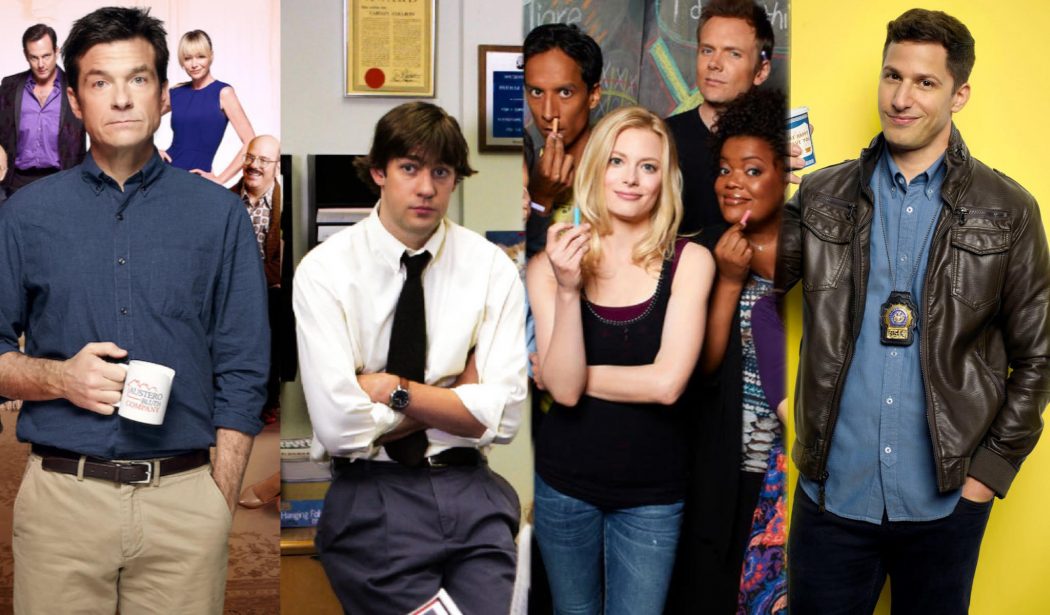Evolution of the modern day sitcom
When you hear the word “sitcom,” chances are you think of laugh tracks, live studio audiences and wacky, unreasonable situations families were thrown into. While, yes, sitcoms did begin as a way to promote family values — think “Leave it to Beaver” and “The Brady Bunch” — situational comedy, or “sitcoms,” soon became group focused. In the 1990s “Friends” and “Seinfeld” made comedy waves with 20-minute episodes displaying day-to-day shenanigans.
Modern-day sitcoms are a bit different. Gone are the days of prerecorded laughter and overarching themes, replaced with a “single-camera” setup and diverse characters who you can’t help but love. Of course, original “sitcom” type shows still exist, such as “How I Met Your Mother,” but the shows talked about in this article will be the ones that changed the genre for the better.
Take “Arrested Development,” created by Mitchell Hurwitz, which revolved around the bankrupt and dysfunctional Bluth family. The show, which ran from 2003-2006 and later revived in 2013 by Netflix, was the start of the modern-day sitcom for a number of reasons. For one, it was the inspiration for “single-camera comedy” for many shows after including “30 Rock” and “Community.” The classic cut-aways, recurring jokes, fourth wall breaks and flashbacks common in modern-day sitcoms would not have been possible without the influence of “Arrested Development.” The show is also praised for being one of the best comedies of all time by Entertainment Weekly and IGN. The sitcom, which once focused on family values and the lives of friends and family, became a spoofed version of dysfunctional groups that all started with the Bluth Family.
Then came the mockumentary. Michael Schur and Greg Daniels are perhaps some of the most renowned writers and producers in comedy, having created, co-created or written episodes for “The Office”, “Parks and Recreation”, “Brooklyn Nine-Nine” and “The Good Place.” Their contributions not only helped to define the modern-day sitcom but made the “mockumentary” subgenre more respectable. “The Office” ran from 2005-2013 and still remains one of the most streamed television series to this day.
“Parks and Recreation” was a similar mockumentary about a group of coworkers in Pawnee, IN and “Modern Family,” which followed the lives of a large family tree, were additionally popular mockumentary-style sitcoms that racked up their own millions of views. The reason why these shows managed to last upward of a decade was that they had the same viewers. Neilson Ratings listed the main demographic for the modern sitcom at the time of these three shows’ airing was 18-49, coming in as the first, second and sixth scripted shows, respectively. Then came a new player: “Community.”
You may know Dan Harmon today as one of the co-creators of “Rick and Morty,” but in 2009 he teamed up with Joe and Anthony Russo, who had previously worked on “Arrested Development” (and are more known as the directors of “Avengers: Infinity War” and “Endgame”) to bring a story about a group of misfits who attended Greendale Community College. The show combined everything it had learned from previous shows to make fun of TV tropes using meta-humor, fourth wall breaks and pop culture references. Its wacky sense of humor and episodic themes created a cult following which actually helped the show get revived for one more season after it was canceled in 2014. Harmon based the show on his own college experiences —albeit a bit more exaggerated— and the way the school allowed him to truly find himself. This is what makes “Community” stand out. Yes, it’s weird and a bit outlandish, but Jeff Winger learned to care for his friends over his job and Abed Nadir managed to understand the world outside of Inspector Spacetime and the darkest timelines. To make fun of what a sitcom had originally been while still teaching a lesson set precedent for future shows.
“The Good Place” taught us that people can still learn to be good no matter how old they are, while “Superstore” showed the world that people who work in grocery stores or big box stores are worth no less than anyone else. The characters in “New Girl” learned about love, heartbreak and self-journey over its seven seasons while “30 Rock” showed that chasing your dreams is possible, even when you feel your lowest. The modern-day sitcom provides a laugh, but it also makes us cry, snort, scoff and understand the lives of people all over the world.
—sydney.dahle@aggiemail.usu.edu
@dillydahle
What do you think is the best modern-day sitcom? Here’s what Twitter thought!
Okay. This is it. One last time for the recognition as the best show! Here are your choices, pick wisely!
— Sydney Dahle (@DillyDahle) May 25, 2020
Round 2:
— Sydney Dahle (@DillyDahle) May 24, 2020
Round 3:
— Sydney Dahle (@DillyDahle) May 24, 2020
Round 2:
— Sydney Dahle (@DillyDahle) May 21, 2020
Round 4:
— Sydney Dahle (@DillyDahle) May 21, 2020
Round 6:
— Sydney Dahle (@DillyDahle) May 21, 2020

